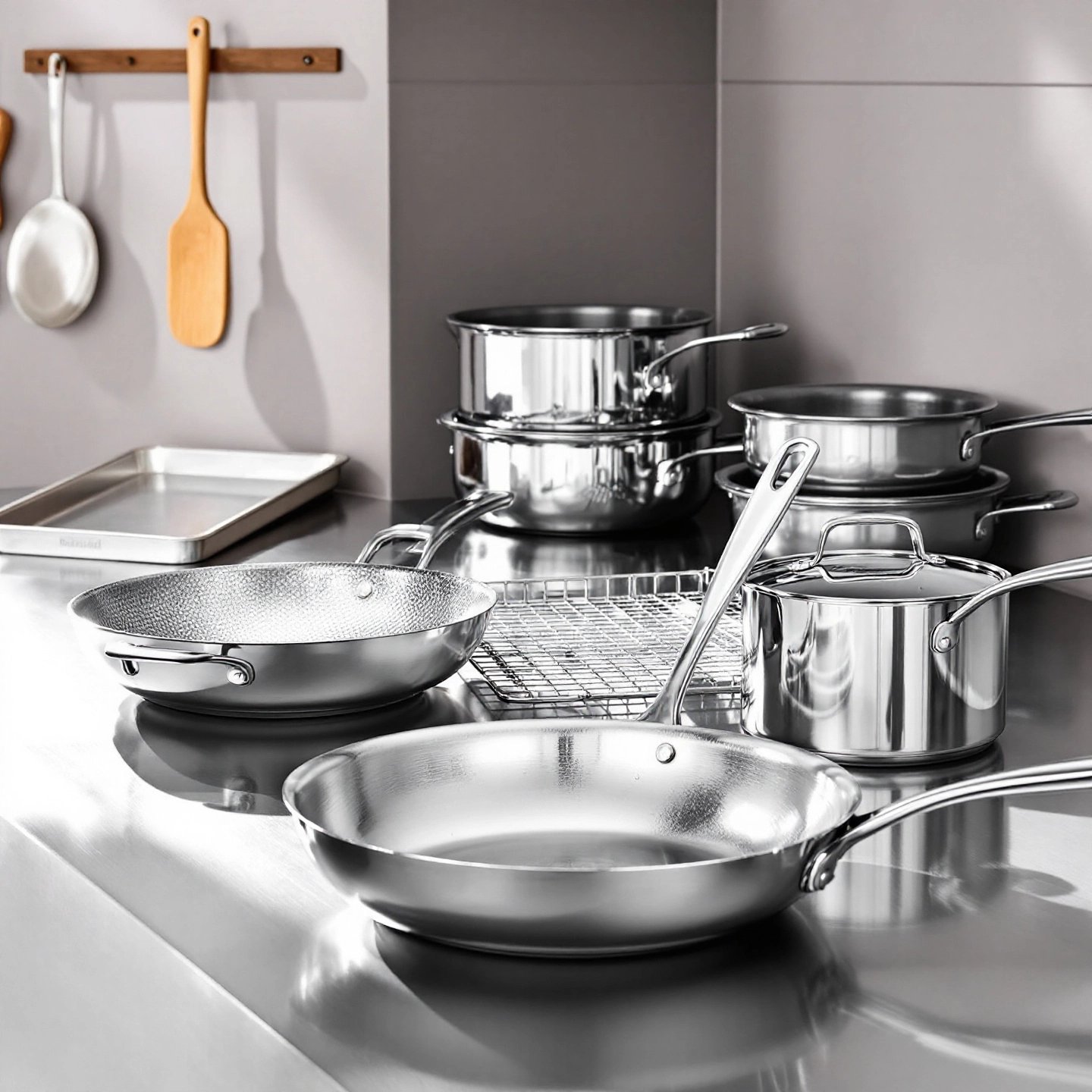
Aluminum pans have long been a staple in both home and professional kitchens, cherished for their lightweight design and excellent heat conduction. These attributes make them ideal for a wide range of cooking tasks, from frying to baking, ensuring that meals are prepared efficiently and evenly. The popularity of aluminum cooking pans is not just about practicality; it extends to their affordability, making them accessible to cooks of all levels.
In modern kitchens, aluminum pans fit seamlessly into daily cooking routines. They are versatile enough to handle everything from a quick stir-fry to a slow-cooked stew, adapting to various culinary needs with ease. This adaptability is complemented by their safety and ease of care. While concerns about aluminum leaching into food have been raised, studies indicate that the amount is negligible, especially when proper cooking practices are (source).
The variety of aluminum pans available is vast, catering to different cooking and baking needs. From basic frying pans to specialized bakeware like muffin and loaf pans, each type serves a unique purpose in the kitchen. As we explore further, you'll discover how these pans not only enhance cooking efficiency but also contribute to the culinary creativity of both amateur cooks and seasoned chefs alike.
Aluminum cookware, including aluminum pots and pans, has secured its place in kitchens around the globe, and for good reason. The appeal lies in its exceptional heat conduction, allowing for even cooking and reducing the chances of hot spots. This quality ensures that your dishes are cooked uniformly, which is particularly beneficial for recipes requiring precise temperature control.
One of the most significant advantages of aluminum cookware is its lightweight nature. This makes it easy to handle, especially when compared to heavier materials like cast iron or stainless steel. Imagine flipping a pancake or sautéing vegetables without the strain of a heavy pan—aluminum makes this possible, enhancing the cooking experience.
Affordability is another compelling factor. Aluminum pots and pans are often more budget-friendly than their stainless steel counterparts, making them accessible to a wider range of consumers. This cost-effectiveness doesn't come at the expense of performance, as aluminum cookware is known for its durability and longevity, provided it is properly maintained.
When it comes to everyday utility, aluminum cookware shines. It heats up quickly and cools down just as fast, saving time in the kitchen. This rapid response to temperature changes makes it ideal for quick-cooking techniques like stir-frying. Furthermore, with the right care—such as avoiding metal utensils that can scratch the surface—aluminum cookware can last for many years.
Despite its benefits, some concerns about aluminum leaching into food persist. However, these concerns are largely unfounded when using anodized aluminum or cookware with a non-stick coating, which minimizes direct contact between food and the metal (source). Such coatings also enhance the cookware's durability and ease of cleaning, further solidifying aluminum's status as a versatile kitchen staple.
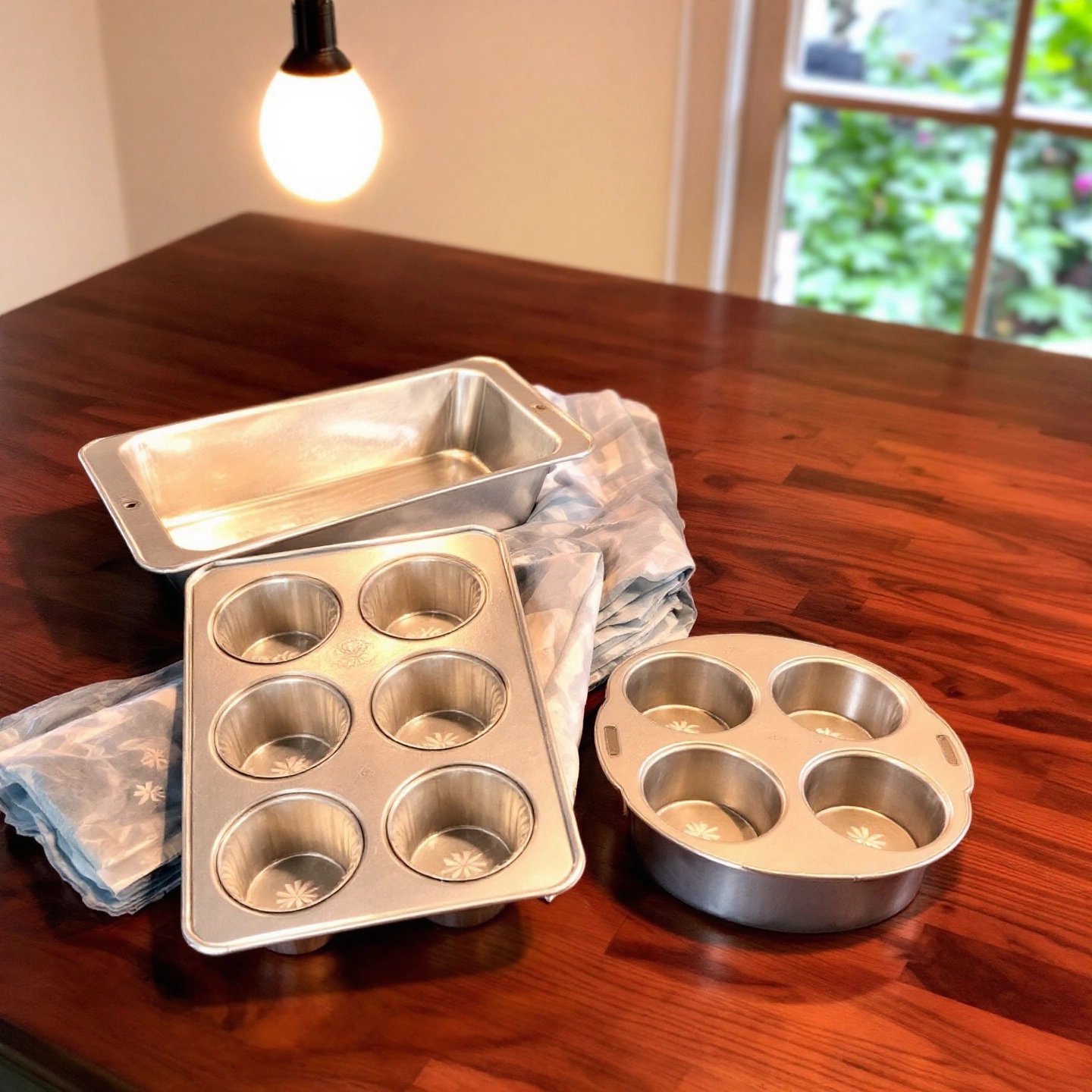
When it comes to baking, the choice of bakeware can significantly influence the outcome of your culinary creations. Aluminum baking pans are particularly favored for their superior heat conduction, ensuring even baking and browning. Let's delve into the various types of aluminum bakeware and how they cater to different baking needs.
Aluminum baking pans are a staple in many kitchens due to their versatility. Whether you're baking cookies or roasting vegetables, these pans provide consistent results. Their lightweight nature makes them easy to handle, and they come in a variety of sizes to suit different recipes. The quick heat conduction of aluminum ensures that your baked goods are evenly cooked, preventing the dreaded underbaked center or overbaked edges.
Aluminum Loaf Pans: Perfect for baking bread, meatloaf, and even loaf cakes, aluminum loaf pans are designed to distribute heat evenly, resulting in a beautifully browned crust. Their straight sides and uniform shape ensure that your bread rises evenly, making them ideal for both beginners and experienced bakers.
Aluminum Muffin Pans: Ideal for muffins and cupcakes, these pans often feature a non-stick coating for easy release. The uniform design ensures that each muffin bakes evenly, making them a favorite for breakfast treats and party desserts alike.
Aluminum Cake Pans: Available in various shapes and sizes, aluminum cake pans are essential for bakers who want to create perfectly baked cakes. The even heat distribution of aluminum helps prevent the common issue of cakes doming in the center, ensuring a flat surface that's perfect for decorating.
Aluminum pie and tart pans are designed to deliver crisp, golden crusts, essential for classic pies and tarts. Their excellent heat conduction ensures that the bottom crust cooks thoroughly, avoiding the dreaded soggy bottom. For those who enjoy baking pies, these pans are indispensable.
For those seeking high-quality and durable aluminum profiles, Shengxin Aluminum offers an array of options that cater to various baking needs. Their expertise in producing reliable aluminum products makes them a trusted choice for both home bakers and professionals.
In our next section, we will explore how disposable foil pans can simplify meal preparation, offering convenience and ease for busy cooks.
Disposable aluminum pans, often referred to as aluminum foil pans, have become an indispensable tool for those who value convenience in the kitchen. These pans offer a hassle-free solution to meal preparation, particularly when it comes to large-scale cooking or events. Let's explore the various ways these pans can simplify your culinary tasks.
One of the most appealing aspects of disposable aluminum pans is their ability to significantly reduce cleanup time. After a meal, the last thing anyone wants is to spend time scrubbing pots and pans. With disposable pans, you can simply discard them after use, freeing up time to enjoy your meal and company. This feature is particularly beneficial during large family gatherings or events where multiple dishes are prepared (source).
These pans are not only lightweight but also highly portable, making them perfect for potlucks, picnics, and catering events. Their stackable design allows for easy transport and storage, enabling you to prepare and carry multiple dishes without hassle. Whether you're baking a casserole or roasting vegetables, the versatility of disposable aluminum pans ensures they can handle a variety of cooking tasks.
While disposable pans offer convenience, it's important to consider their environmental impact. Aluminum is highly recyclable, and many recycling programs accept used aluminum containers. To ensure proper recycling, it's crucial to clean the pans thoroughly before disposal. This not only helps in reducing landfill waste but also contributes to environmental sustainability efforts (source).
In the next section, we will delve into practical tips for safe and healthy cooking with aluminum pans, ensuring you maximize their benefits while maintaining safety in the kitchen.
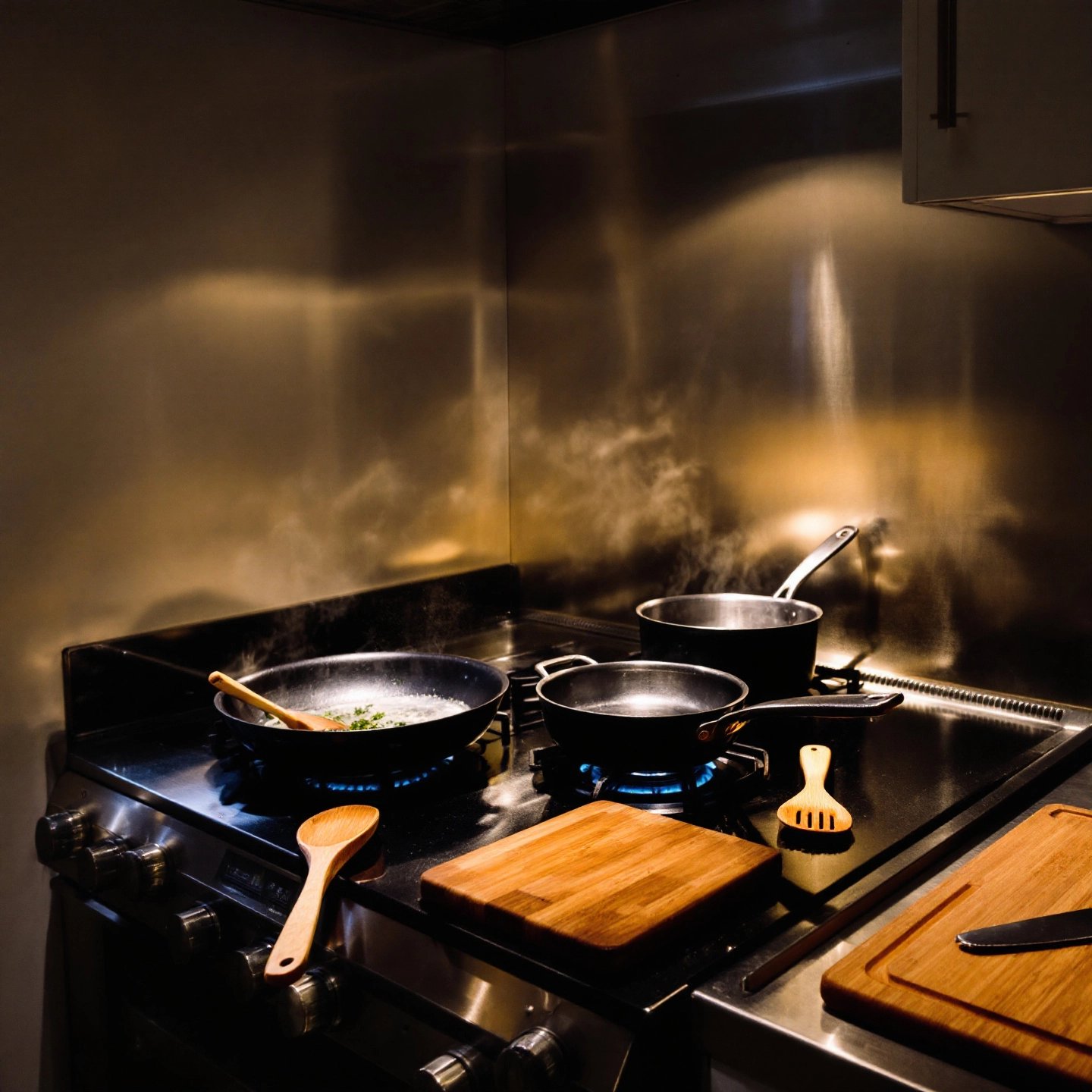
Are aluminum pans safe? This question often arises among home cooks and culinary enthusiasts alike. The short answer is yes, aluminum pans are generally safe for cooking, provided you follow some basic guidelines. Let's explore how to maximize safety and maintain the quality of your aluminum cookware.
Concerns about aluminum leaching into food have been largely dispelled by research. The amount of aluminum that transfers into food is minimal and considered safe for most people. However, it is advisable to avoid cooking highly acidic foods, such as tomatoes or citrus fruits, in aluminum pans for extended periods, as these can increase leaching (source). For those with specific health conditions, like kidney issues, consulting a healthcare provider for personalized advice is prudent.
Anodized aluminum pans offer an excellent solution for those concerned about leaching. Through an electrochemical process called anodization, a protective layer is formed on the pan's surface, making it more durable and resistant to corrosion and wear (source). This non-reactive surface prevents food from picking up metallic flavors and ensures that no harmful chemicals are released during cooking.
By adhering to these guidelines, you can ensure that your aluminum cookware remains a safe and reliable choice for your culinary adventures. In the following section, we'll explore methods for cleaning and maintaining your aluminum pans, helping to extend their lifespan and keep them looking their best.
Maintaining the pristine condition of your aluminum pans is essential not only for aesthetic reasons but also to ensure their longevity and performance. Over time, these pans can accumulate stains and discoloration, but with the right techniques, you can keep them looking new. Let’s explore some effective methods for how to clean aluminum pans and maintain their shine.
After each use, wash your aluminum pans with warm water and mild dish soap. Use a soft sponge to avoid scratching the surface. This routine cleaning helps prevent the buildup of grease and food residues, making deep cleaning less frequent (source).
When your pans show signs of discoloration, it’s time for a deep clean. Here's a simple method:
To maintain the aluminum’s shine and prevent future discoloration, consider these tips:
By incorporating these cleaning and maintenance practices, you can extend the life of your aluminum pans, ensuring they remain a reliable tool in your kitchen. In our next section, we will compare aluminum pans with stainless steel options, helping you choose the best cookware for your culinary needs.
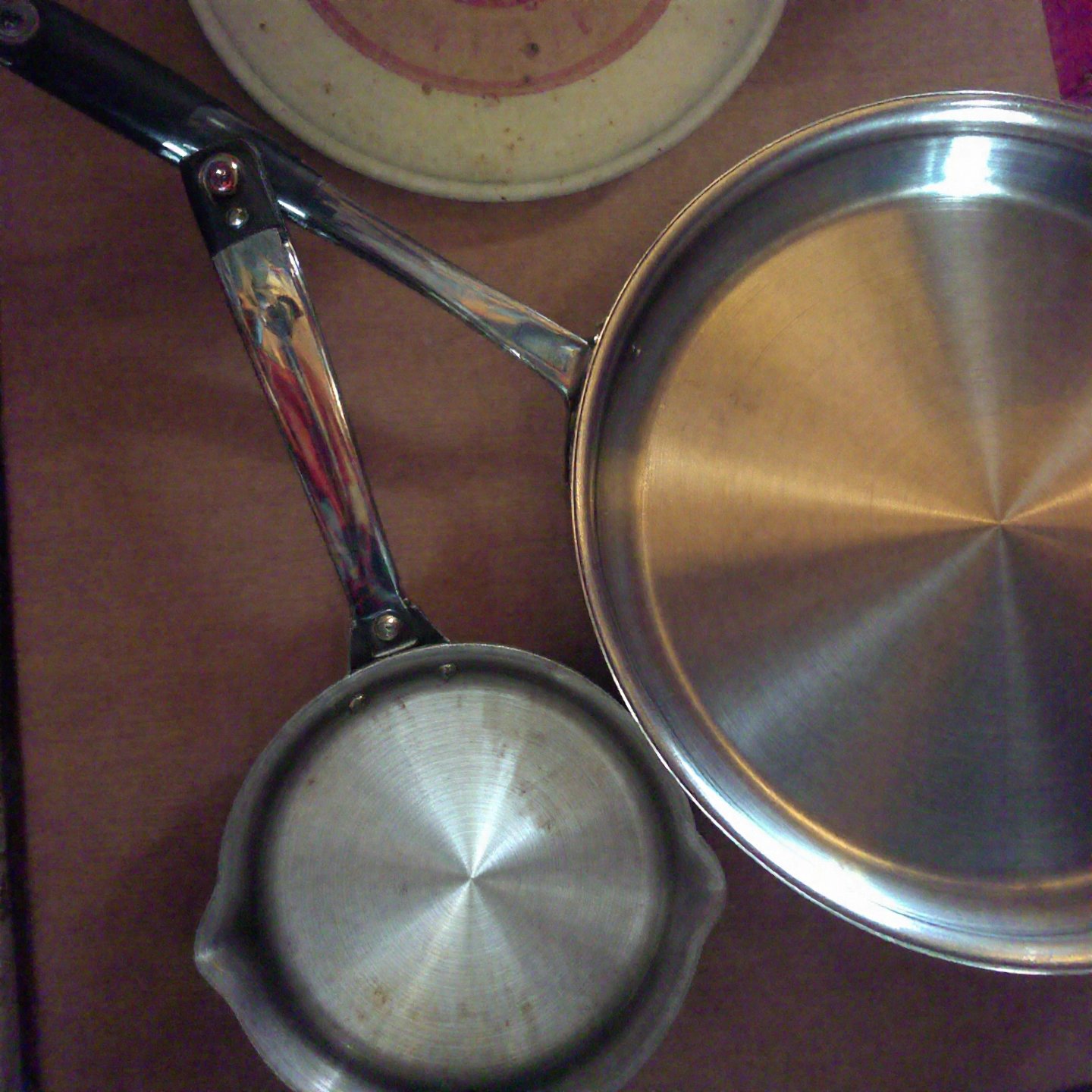
Choosing between aluminum and stainless steel pans can be a daunting task, especially when both have their unique advantages and serve different culinary needs. Understanding the differences between these materials can help you make an informed decision suited to your cooking style.
Aluminum pans are renowned for their excellent heat conductivity, which ensures rapid and even heat distribution. This makes them ideal for tasks requiring precise temperature control, such as searing or sautéing. In contrast, stainless steel pans, while not as efficient in heat conduction, offer a more stable cooking surface that is less likely to react with food. This makes them perfect for browning meats or cooking acidic ingredients without altering flavors (source).
When it comes to durability, stainless steel often takes the lead. It is resistant to scratches, dents, and warping, making it suitable for rigorous cooking methods and long-term use. Aluminum pans, while lightweight and easy to handle, can be prone to scratches and require gentle care to maintain their surface integrity. Anodized aluminum pans offer a more durable alternative, providing a scratch-resistant surface that extends their lifespan.
If you prioritize lightweight cookware with excellent heat distribution, aluminum pans are a great choice for everyday cooking. They excel in tasks that require quick temperature adjustments and are easy to maneuver. For those who need a more robust option that can withstand high temperatures and frequent use, stainless steel is the preferred choice. It is particularly beneficial for recipes that involve deglazing or cooking with acidic ingredients.
For those seeking high-quality aluminum profiles, Shengxin Aluminum offers durable options that cater to various culinary needs. Their expertise in producing reliable aluminum products ensures that you have the best tools for your kitchen endeavors.
As we continue our exploration, we'll delve into specialty cookware and unique pan designs that cater to niche culinary needs, providing even more options for enhancing your cooking experience.
In the world of culinary tools, specialty cookware such as the cast aluminum pan and aluminum pans with lids offer unique benefits that cater to specific cooking needs. These designs not only enhance the cooking process but also add a touch of elegance and functionality to your kitchen arsenal.
The cast aluminum pan is celebrated for its robust construction and excellent heat retention. Imagine preparing a perfectly seared steak or a slow-cooked stew; the pan's ability to maintain even heat distribution makes it ideal for such tasks. Its durability ensures that it can withstand high temperatures without warping, providing a reliable tool for both everyday cooking and special occasions.
Beyond performance, the aesthetic appeal of cast aluminum pans is notable. They often feature intricate designs and finishes that can complement any kitchen decor, making them a favorite among culinary enthusiasts who value both function and style.
Aluminum pans equipped with lids offer versatility that is hard to match. These pans are perfect for recipes that require simmering or braising, where a tight-fitting lid is essential to retain moisture and flavor. Whether you're preparing a hearty soup or a delicate sauce, the lid helps to lock in steam, speeding up cooking times and enhancing taste.
Consider the convenience of an aluminum pan with a lid for one-pot meals or when you need to keep dishes warm before serving. The lightweight nature of aluminum ensures that these pans are easy to handle, even when filled with food, making them a practical choice for busy kitchens.
When selecting specialty cookware, it's important to consider both your cooking habits and the aesthetic appeal of the pieces. A cast aluminum pan might be your go-to for high-heat cooking, while aluminum pans with lids offer unmatched versatility for a variety of dishes. Reflect on your culinary needs and kitchen space to choose designs that will enhance your cooking experience and complement your kitchen's style.
As you explore these unique cookware options, remember that the right tools can elevate your culinary creations, making cooking not just a task, but a delightful experience.
Next, we will guide you through selecting the perfect size and accessories for your aluminum pans, ensuring that you have the right tools for every cooking scenario.
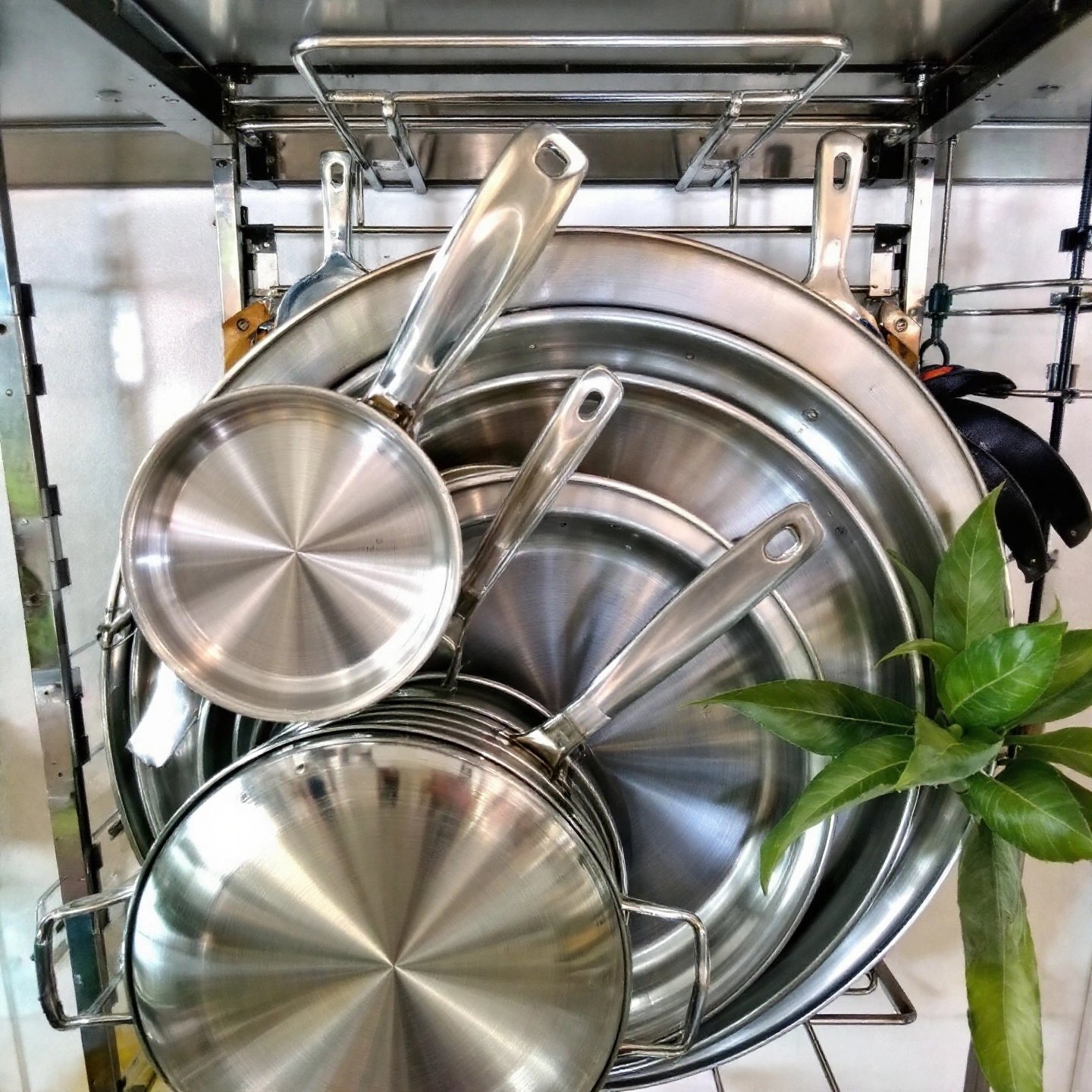
Selecting the right aluminum pan sizes is crucial for optimizing your cooking experience. The size of the pan can greatly influence the outcome of your dishes, affecting everything from cooking time to the texture of your food. Let’s explore how to choose the perfect size and accessories for your aluminum pans, ensuring you get the most out of your culinary efforts.
When deciding on aluminum pan sizes, consider the types of meals you frequently prepare and the number of people you typically cook for. For instance, large aluminum pans are ideal for family-sized meals or gatherings, allowing you to cook substantial portions of food like roasts or casseroles. On the other hand, small aluminum pans are perfect for single servings or small batches, such as reheating leftovers or preparing side dishes.
Accessories such as lids and handles can enhance the functionality of your aluminum pans. A well-fitting lid is essential for recipes that require simmering or retaining moisture, while sturdy handles ensure safe and easy maneuverability. Consider purchasing pans with removable or heat-resistant handles if you frequently transition from stovetop to oven.
Proper storage is key to maintaining the condition of your aluminum pans. Stackable designs can save space, while pan protectors can prevent scratches when stacking multiple pans. If space is limited, consider hanging your pans to keep them easily accessible and in good condition.
By carefully selecting the right aluminum pan sizes and accessories, you can enhance your cooking efficiency and create delicious meals with ease. In our next section, we will conclude by summarizing the key benefits of aluminum pans and how they can elevate your culinary experience.
As we wrap up our exploration of aluminum pans, it's clear that their versatility, affordability, and ease of care make them a valuable addition to any kitchen. From quick stir-fries to elaborate baked goods, aluminum pans cater to a wide range of culinary needs, offering both amateur cooks and seasoned chefs the tools to create effortlessly delicious meals.
Safety is a key consideration when using aluminum cookware. By adhering to simple guidelines—such as avoiding prolonged cooking of acidic foods and choosing anodized options—you can ensure that your cooking remains safe and healthy. The minimal leaching of aluminum, when used correctly, shouldn't deter you from enjoying the benefits these pans offer.
Moreover, the quality aluminum cookware available today, like those from Shengxin Aluminum, provides durability and performance that can significantly enhance your cooking experience. Investing in high-quality products not only ensures better cooking results but also extends the life of your cookware, making it a wise choice for any kitchen.
In conclusion, aluminum pans are more than just cooking tools—they are gateways to culinary creativity and efficiency. Whether you're preparing a family meal or experimenting with new recipes, the right aluminum cookware can elevate your cooking and baking endeavors. Embrace the versatility of aluminum pans and enjoy the path to effortless meals.
Avoid cooking acidic foods like tomatoes and citrus fruits in aluminum pans for extended periods, as they can increase aluminum leaching.
Yes, many professional chefs use aluminum pans for their excellent heat conduction, lightweight design, and affordability.
Aluminum pans offer better heat conductivity and are lighter, while stainless steel is more durable and resistant to acidic foods.
Use anodized aluminum pans, avoid cooking acidic foods for long periods, and use moderate heat to prevent damage.
Disposable aluminum pans offer convenience with easy cleanup and portability, ideal for large-scale cooking and events.
 Інтернет-сервіс
Інтернет-сервіс 0086 136 3563 2360
0086 136 3563 2360 sales@sxalu.com
sales@sxalu.com +86 136 3563 2360
+86 136 3563 2360